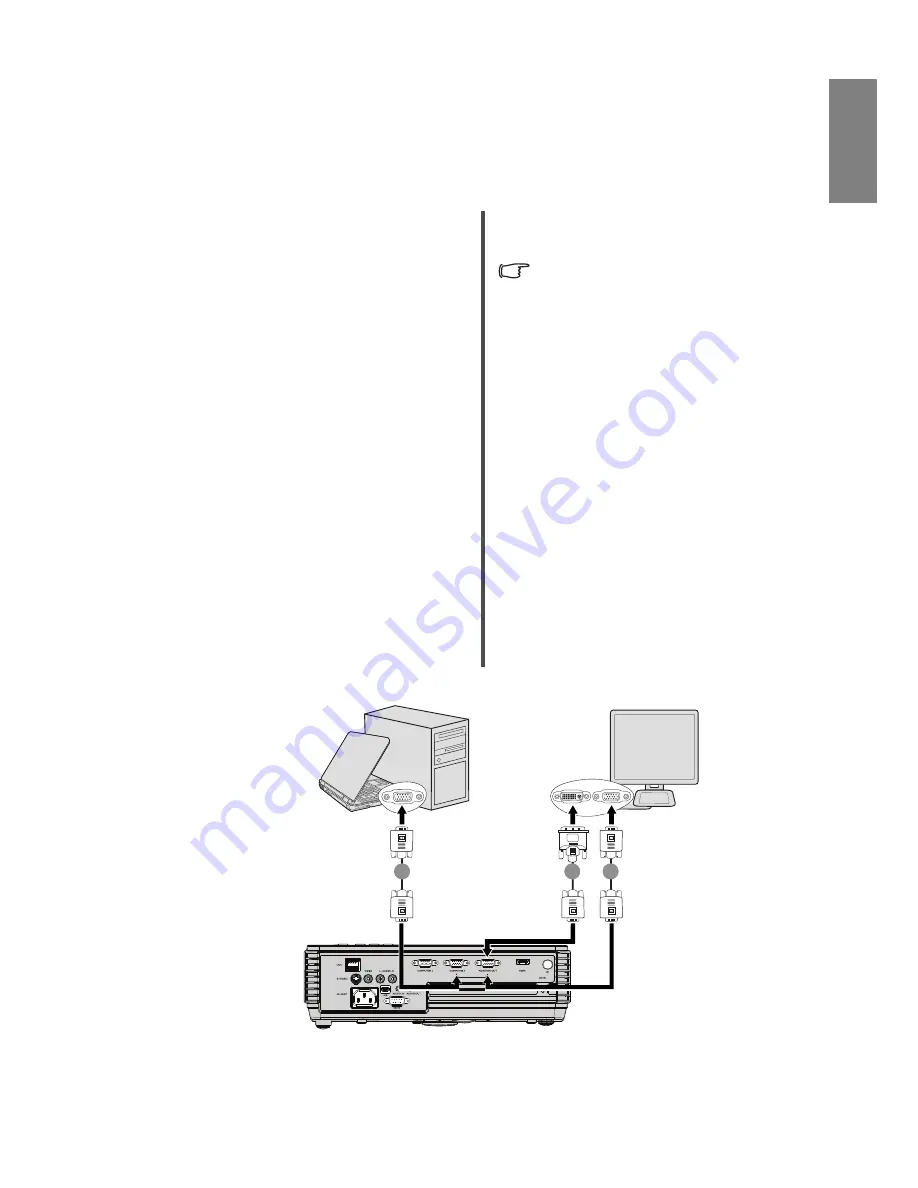
Connection
19
English
Connecting a monitor
If you want to view your presentation close-up on a monitor as well as on the screen, you
can connect the
D-SUB OUT
signal output socket on the projector to an external monitor
with a VGA or VGA to DVI-A cable by following the instructions below.
To connect the projector to a monitor:
The final connection path should be like that shown in the following diagram:
•
With a VGA cable:
•
With a VGA to DVI-A cable:
Your monitor must be equipped
with a DVI input socket.
1.
Connect the projector to a computer
as described in
"Connecting a
computer" on page 18
. The
MONITOR OUT
output only
works when an appropriate D-SUB
input is made to the projector. Be
sure the projector is connecting with
the computer using the
COMPUTER 1
socket, not the
COMPUTER 2
socket.
2.
Take a suitable VGA cable (only
one supplied) and connect one end
of the cable to the D-Sub input
socket of the video monitor.
3.
Connect the other end of the cable to
the
MONITOR OUT
socket on the
projector.
1.
Connect the projector to a computer
as described in
"Connecting a
computer" on page 18
. The
MONITOR OUT
output only
works when an appropriate D-SUB
input is made to the projector. Be
sure the projector is connecting with
the computer using the
COMPUTER 1
socket, not the
COMPUTER 2
socket.
2.
Take a VGA to DVI-A cable and
connect the DVI end of the cable to
the DVI input socket of the video
monitor.
3.
Connect the VGA end of the cable
to the
MONITOR OUT
socket on
the projector.
3
2
1
Notebook or
desktop
computer
(DVI)
1. VGA cable
2. VGA to DVI-A cable
3. VGA cable
(VGA)
or






























